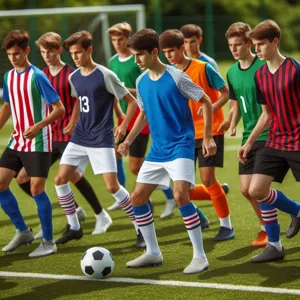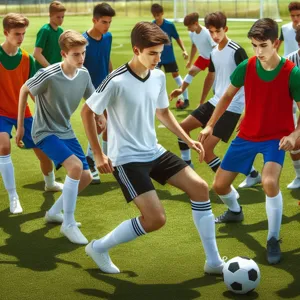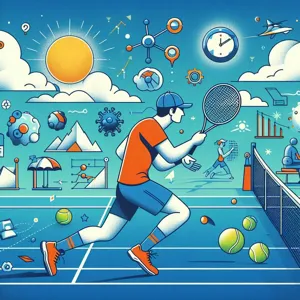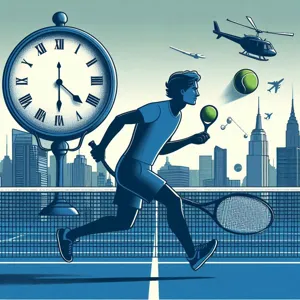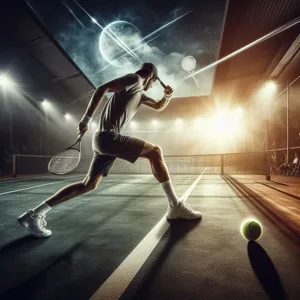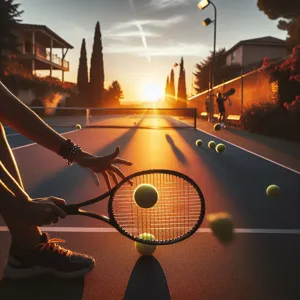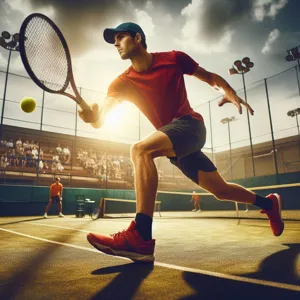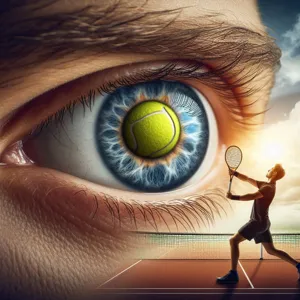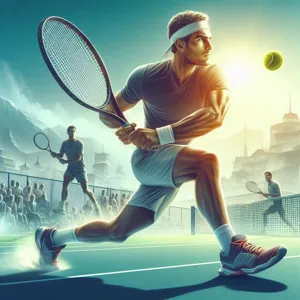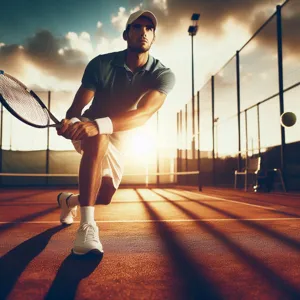Soccer, known as football in most parts of the world, is more than just a game; it’s a cultural phenomenon that unites millions of fans across the globe.
Yet, beyond the exhilarating matches and stunning goals lies a powerful narrative shaped by the media. From the stories that unfold in match commentary to the headlines that dominate sports news, the portrayal of soccer influences not only how we perceive players and teams but also the very essence of the sport itself. As we delve deeper into the intricate relationship between media and soccer, we will explore how coverage, storytelling, and imagery elevate the sport into a spectacle, shaping public opinion and igniting passion among fans. Join us as we uncover the multifaceted ways in which media molds our understanding and appreciation of soccer, highlighting the pitch beyond the field that captivates the hearts of millions.
1. Introduction: The Intersection of Media and Soccer

Soccer, often referred to as “the beautiful game,” has transcended the boundaries of the pitch to become a global phenomenon, capturing the hearts of millions. Yet, its impact goes far beyond the exhilarating goals and dramatic matches; it is deeply intertwined with the media that shapes our understanding and perception of the sport. In today’s world, where technology and communication have reached unprecedented heights, the narrative surrounding soccer is crafted not just by the players and teams, but by the stories spun through television broadcasts, online platforms, and social media.
From the glowing screens of our televisions to the endless scroll of social media feeds, media outlets play a pivotal role in framing the narratives that dominate our conversations about soccer. They highlight the triumphs and tragedies, the controversies, and the triumphs of players, clubs, and nations. The instantaneous nature of news coverage ensures that every moment—be it a stunning goal, an unexpected upset, or a player’s off-field antics—can be analyzed, debated, and dissected in real-time, influencing public perception and fan engagement.
Moreover, the portrayal of soccer in media often reflects and amplifies societal issues, from racial equality to gender representation, making it a powerful platform for change. The way media highlights these narratives can either reinforce stereotypes or challenge the status quo, ultimately shaping how fans, players, and even casual observers view the sport and its cultural significance.
In this blog post, we will delve into the intricate relationship between media and soccer, exploring how coverage, commentary, and social interaction contribute to our understanding of the game. Join us as we uncover the layers beneath the surface of soccer, revealing how media not only informs but also transforms our perception of this beloved sport.
2. The Evolution of Soccer Coverage
The Evolution of Soccer Coverage
Soccer coverage has undergone a remarkable transformation over the decades, evolving from sparse newspaper reports to an all-encompassing global phenomenon characterized by 24/7 coverage across diverse platforms. In the early days, match reports were limited to the sports sections of daily newspapers, often filled with dry statistics and brief summaries. Fans had to rely on word of mouth or radio broadcasts to stay connected with their favorite teams and players.
However, with the advent of television in the mid-20th century, soccer coverage began to take on a new life. Iconic matches were broadcast to living rooms around the world, bringing the sport closer to fans than ever before. The introduction of color television in the 1960s further enriched the viewing experience, allowing fans to appreciate the vibrancy of team colors, stadium atmospheres, and the emotional highs and lows of game day.
As the internet emerged in the late 1990s, soccer coverage entered an unprecedented era of accessibility and engagement. Websites dedicated to soccer news, statistics, and commentary flourished, allowing fans to access real-time updates and analyses from the comfort of their homes. Social media platforms like Twitter and Instagram have since revolutionized the way fans interact with the sport, allowing for instant highlights, behind-the-scenes content, and direct communication with players and clubs.
Today, the evolution of soccer coverage continues with the rise of streaming services and mobile apps that provide fans with unprecedented access to games, interviews, and expert commentary. The global nature of soccer means that coverage transcends borders, with international broadcasters and digital platforms catering to diverse audiences. This democratization of information has led to a more informed and passionate fan base, eager to engage with the sport on multiple levels.
As we look to the future, the evolution of soccer coverage is likely to keep pace with technological advancements, further blurring the lines between traditional journalism and interactive fan experiences. From immersive VR experiences that place fans in the heart of the action to AI-driven analytics that provide deeper insights into player performance, the way we consume soccer is set to change dramatically, shaping our perception of the beautiful game for generations to come.
3. How Media Narratives Influence Fan Perception

Media narratives play a pivotal role in shaping how fans perceive soccer, often transcending the mere statistics of the game. The stories that journalists, commentators, and analysts craft around teams and players can elevate an average match into a dramatic saga, complete with heroes, villains, and underdogs. This storytelling aspect of sports journalism not only captivates audiences but also molds their emotional connections to the game.
For instance, consider how a player’s journey—from a humble background to international stardom—can be highlighted in pre-match features. Such narratives evoke empathy and admiration, prompting fans to rally behind the player and, by extension, their team. Conversely, a media focus on a player’s off-field controversies can taint public perception, leading to polarized opinions that may affect attendance, merchandise sales, and overall support.
Moreover, the framing of rivalry matches can amplify emotions, turning a regular fixture into a battle for pride and supremacy. When the media labels a match as a “must-win” or a “decider,” it adds an extra layer of tension that resonates with fans, influencing how they engage with the game.
Social media further compounds these narratives, allowing fans to share their interpretations, creating echo chambers where certain perceptions can flourish unchecked. The immediacy of social platforms means that opinions can shift rapidly, driven by trending topics or viral moments.
In essence, the media acts as a powerful lens through which fans view soccer, shaping loyalties, expectations, and even the very culture of the sport. By understanding how these narratives evolve, we can better appreciate the intricate relationship between soccer and its passionate following.
4. The Role of Social Media in Shaping Opinions
In today’s digital landscape, social media has emerged as a powerful tool that shapes public opinion and influences perceptions of soccer in ways previously unimaginable. Platforms like Twitter, Facebook, Instagram, and TikTok have become the modern-day town squares, where fans congregate to share their thoughts, celebrate victories, and voice criticisms. The immediacy of these platforms allows for real-time engagement, meaning that a single post or tweet can spark a global conversation within minutes.
The role of influencers and pundits has also evolved, with many former players and analysts amassing huge followings. Their insights and opinions can sway fans and even alter the narrative surrounding a player or team. A glowing endorsement or a biting critique can elevate a player’s status or tarnish their reputation overnight. For instance, a viral clip showcasing a stunning goal can propel a relatively unknown player into the spotlight, while negative commentary during a critical match can lead to an avalanche of backlash.
Moreover, social media serves as a breeding ground for memes and cultural commentary. Humorous edits and satirical posts not only entertain but also shape how fans perceive the game and its players. This dynamic creates a unique feedback loop where the media and fans influence each other, further complicating the narratives that surround the sport. Hashtags like #VARFail or #MessiMagic can encapsulate collective sentiments, turning individual experiences into a shared cultural phenomenon.
However, the influence of social media is a double-edged sword. While it can amplify voices and foster community among fans, it can also lead to misinformation and toxic discourse. The pressure to maintain a certain image or to conform to popular opinion can be overwhelming for players, who must navigate this digital minefield while focusing on their performance on the field.
Ultimately, social media has transformed the way we engage with soccer, turning every match into a global event discussed and dissected across countless platforms. Understanding this role is crucial for fans and stakeholders alike, as it highlights how our perceptions of the game are inextricably linked to the online conversations that unfold around it. In this age of instant information and viral moments, the pitch extends far beyond the field, into the hearts and minds of fans worldwide.
5. The Impact of Commentary on Game Experience

The role of commentary in soccer transcends mere play-by-play narration; it shapes the very fabric of the game experience for viewers. When you sit down to watch a match, the voices that accompany the visuals do more than relay information—they weave a narrative that influences your emotions and perceptions. A skilled commentator can elevate a thrilling goal into a moment of pure ecstasy, while a poorly delivered remark might diminish the significance of a critical play.
Commentators possess the power to contextualize moments, providing historical insights or drawing parallels to past games that deepen your understanding and appreciation of the sport. For instance, when a player scores an incredible free-kick, a seasoned commentator might evoke memories of legendary goals from the past, creating a sense of continuity within the sport’s rich history. This adds layers to the viewing experience, making it not just about the present game, but about the broader saga of soccer.
Moreover, the emotional tone and enthusiasm of commentators can amplify the intensity of the match. Their excitement can turn a routine clearance into a heart-stopping moment, urging fans to lean closer to the screen. When they celebrate a goal with unabashed fervor, it resonates with viewers, creating a shared experience that transcends geographical barriers. Conversely, a lackluster or overly critical commentary can dull the excitement, leaving fans feeling disconnected from the action unfolding on the field.
In an age where social media allows fans to engage in real-time discussions, commentators also face the challenge of navigating diverse opinions and expectations. The immediacy of online reactions can influence their delivery, pushing them to balance personal insights with the pulse of the fanbase. As a result, commentary has become a dynamic interplay of analysis, emotion, and audience engagement, molding the way we experience soccer.
Ultimately, the impact of commentary on the game extends far beyond mere words. It shapes our understanding of soccer, enhances our emotional responses, and fosters a deeper connection to the sport we love. Whether it’s a classic match or a nail-biting finale, the voices we hear guide us through the rollercoaster of emotions that soccer brings, reminding us that every game is more than just a contest; it’s a shared experience that unites fans across the globe.
6. Behind the Scenes: Media Production in Soccer
Behind the Scenes: Media Production in Soccer
The world of soccer is not just about the players on the pitch; it also involves a complex tapestry of media production that shapes how fans and viewers perceive the game. This behind-the-scenes machinery works tirelessly to deliver the excitement of live matches, player interviews, and insightful commentary, influencing the emotional and cultural narratives surrounding soccer.
From the moment a match is scheduled, a whole world of coordination begins. Camera crews scout the best angles to capture the action, ensuring that every thrilling goal or breathtaking save is immortalized for audiences worldwide. Directors and producers meticulously plan shots, often working in tandem with commentators who provide context and analysis, enhancing the viewing experience. The technology used in these productions has evolved dramatically, with high-definition cameras, drones, and even virtual reality becoming integral parts of the soccer media landscape.
Moreover, the storytelling doesn’t stop at the final whistle. Post-match analysis shows dissect the game, highlighting key moments and player performances, while pre-match build-ups create anticipation and excitement. Social media platforms serve as additional channels where highlights, memes, and fan reactions proliferate, further amplifying the reach of the sport.
Yet, it’s not just the match coverage that matters; documentaries, behind-the-scenes features, and biopics about legendary players and teams provide depth to the sport, showcasing the struggles, triumphs, and human stories that resonate with fans. These narratives can shape a player’s legacy, influence public perception, and even impact sponsorship deals.
In essence, media production in soccer is a powerful tool that crafts the narratives fans hold dear. It shapes our understanding of the game, influences fandom, and ultimately, enriches the soccer experience. The next time you watch a match, take a moment to appreciate the intricate web of media production that brings the beautiful game to life.
7. The Power of Visual Storytelling in Soccer

In the world of soccer, the magic often extends beyond the pitch, where the power of visual storytelling plays a crucial role in shaping how fans perceive the game and its players. From breathtaking match highlights to behind-the-scenes documentaries, visual media captures the essence of soccer, weaving narratives that resonate deeply with audiences around the globe.
Television broadcasts bring the intensity of a live match into homes, using close-ups of players’ emotions, slow-motion replays of stunning goals, and panoramic views of packed stadiums to create an immersive experience. Every shot is meticulously crafted to build suspense and elicit emotion, transforming a simple game into a gripping spectacle. The colors of team jerseys, the dynamic movement of players, and the ecstatic reactions of fans are all captured in a way that elevates the sport beyond mere competition.
Documentaries and mini-series delve into the personal stories of players, revealing their struggles, triumphs, and the sacrifices made en route to success. These narratives not only humanize the athletes but also create a deeper connection between them and the fans. Through interviews, personal anecdotes, and candid moments, viewers gain insight into the lives of those they cheer for, fostering loyalty and admiration.
Social media platforms have further amplified the power of visual storytelling, allowing fans to engage with content in real time. Short clips, memes, and live updates create a vibrant digital community where fans share their passion, celebrate victories, and commiserate over defeats. The immediacy of these platforms enables clubs and players to respond to fans directly, reinforcing their connection and keeping the dialogue alive long after the final whistle.
In essence, visual storytelling in soccer transcends the boundaries of the game itself. It shapes narratives, influences perceptions, and creates lasting relationships between players, teams, and fans. As the beautiful game continues to evolve, the stories told through visuals will remain a powerful tool in engaging audiences and deepening the love for soccer worldwide.
8. Case Studies: Iconic Moments and Media Representation
In the ever-evolving landscape of soccer, media representation plays a pivotal role in shaping not just the narrative around iconic moments, but also the perception of the sport itself. Let’s delve into a few case studies that illustrate how media coverage has influenced public opinion and heightened the emotional stakes surrounding unforgettable events on the pitch.
**1. The Hand of God:** Diego Maradona’s infamous “Hand of God” goal during the 1986 World Cup is a prime example of media’s ability to amplify a single moment into a cultural phenomenon. The footage, replayed countless times, transformed the controversial play into a legendary story, embodying both the genius and the flaws of one of soccer’s greatest players. Media outlets worldwide debated the ethics of the goal, enhancing Maradona’s narrative as a flawed hero. This duality—celebration mixed with controversy—captivated audiences, leading to intense discussions that extended far beyond the game itself.
**2. The Miracle of Istanbul:** The 2005 UEFA Champions League final between Liverpool and AC Milan is another striking case where media representation took a thrilling game and etched it into soccer lore. Liverpool’s stunning comeback from a 3-0 halftime deficit to win on penalties was not just a sporting achievement; it was a story of resilience and hope. Media coverage highlighted the emotional rollercoaster of the match, showcasing fan reactions and player interviews that conveyed the sheer drama of the event. This narrative resonated with viewers, solidifying the game as one of the greatest comebacks in sports history, and forever linking Liverpool to the concept of never giving up.
**3. Women’s Soccer and the Fight for Equality:** The representation of women’s soccer in the media has evolved significantly over the years, particularly highlighted by the 2019 FIFA Women’s World Cup. The tournament garnered unprecedented coverage, showcasing not only the athleticism and skill of the players but also the broader fight for gender equality in sports. Major networks dedicated extensive airtime to the matches, and the stories of players like Megan Rapinoe and Alex Morgan became symbols of empowerment and advocacy. By amplifying these narratives, media outlets played a crucial role in reshaping public perception, increasing viewership, and inspiring the next generation of female athletes.
These case studies underscore the profound impact media representation has on soccer, illustrating how iconic moments can be transformed into powerful stories that resonate with fans around the world. As media continues to evolve, so too will its role in shaping not just the perception of the sport, but also the cultural and social narratives that surround it. The pitch may be where the action unfolds, but it is through the lens of media that these moments truly come to life.
9. The Effect of Sponsorships and Advertising
Sponsorships and advertising play a crucial role in shaping the perception of soccer, influencing not just the way fans view the game, but also how they interact with it. When a global brand aligns itself with a soccer team or event, it sends a powerful message to consumers about the values and lifestyle associated with that brand. For instance, the partnerships between top clubs and luxury brands create an aura of prestige around both the team and the sponsor, suggesting that supporting the club is synonymous with a certain lifestyle or status.
As fans watch their favorite teams compete, they’re also being subtly influenced by the logos and advertisements that adorn players’ jerseys, stadiums, and broadcasts. These visual cues form powerful associations in the minds of viewers. A thrilling match can be underscored by the excitement of an advertisement that airs during halftime, linking the emotional highs of soccer to the brand’s identity. The clever use of advertising during major tournaments, like the World Cup or UEFA Champions League, amplifies this effect, as brands vie for attention in front of millions of viewers, strategically tying their messages to the emotional landscape of the sport.
Moreover, sponsorships often extend beyond simple logos; they frequently involve deeper narratives that entwine the brand with the sport’s culture. Consider the way certain brands have leveraged player endorsements: when a star athlete promotes a product, it creates a personal connection with fans, often resulting in a significant increase in brand loyalty. This strategy not only elevates the player’s marketability but also cements the brand’s status within the soccer community.
However, it’s essential to recognize that this influence is a double-edged sword. The commercialization of soccer can sometimes clash with its core values of passion, community, and competition. Fan backlash can occur when they perceive that the essence of the game is being overshadowed by corporate interests. Thus, while sponsorships and advertising have the potential to enhance the sport’s reach and appeal, they must be balanced with a respect for the traditions and emotions that make soccer a beloved global phenomenon.
In summary, the intricate relationship between sponsorships, advertising, and soccer not only shapes the financial landscape of the sport but also constructs a narrative that influences how fans engage with their favorite teams. As media continues to evolve, so too will the ways in which brands connect with soccer, forever altering the perception of the game and its place in our lives.
10. Gender Representation in Soccer Media
### Gender Representation in Soccer Media
In the world of soccer, the narrative surrounding gender representation in media is as pivotal as the game itself. Historically, women’s soccer has often been overshadowed by its male counterpart, both in coverage and in the attention it receives from fans and sponsors. However, recent years have seen a notable shift, with increased visibility and representation of female athletes challenging long-standing biases. Media plays a crucial role in this transformation, shaping public perception and fostering a more inclusive environment for all players.
The disparity in coverage between men’s and women’s soccer has been stark, often reflecting societal attitudes toward gender and sports. Female athletes have had to navigate a landscape where their accomplishments are frequently minimized or sensationalized compared to their male peers. However, as more media outlets recognize the growing popularity of women’s soccer—especially highlighted during events like the FIFA Women’s World Cup—there is a burgeoning momentum to spotlight female talent on par with male players.
For instance, social media platforms and streaming services have become powerful tools for women’s soccer, allowing fans to access matches, interviews, and behind-the-scenes content that were once relegated to the shadows. This newfound visibility not only amplifies the voices of female athletes but also alters the narrative surrounding women’s sports. The stories of resilience, skill, and triumph are now being told, inspiring a new generation of young girls to pursue soccer as a viable and celebrated career.
Moreover, brands and advertisers are beginning to recognize the value of aligning themselves with women’s soccer, as evidenced by sponsorships and partnerships that prioritize gender equity. This shift is crucial not just for the sport itself, but also for fostering a culture that values diversity and representation. As media continues to evolve, it is essential that it reflects the true spirit of the game—one that embraces athletes of all genders and champions their contributions to soccer.
In conclusion, the journey toward equitable gender representation in soccer media is ongoing, but the strides being made today signal a brighter future. By prioritizing diverse narratives and showcasing the incredible talent of female athletes, media outlets can significantly reshape how soccer is perceived and celebrated, both on and off the field.
11. How Media Bias Affects Team and Player Reputation
Media bias can significantly shape the reputation of both teams and players in the world of soccer, often swaying public opinion and influencing fan loyalty. The portrayal of events, player performances, and managerial decisions can create narratives that linger long after the final whistle has blown. For instance, a single controversial match can be dissected across countless platforms, with commentators and analysts presenting varying interpretations that can either vilify or elevate a player’s reputation overnight.
Consider the impact of sensational headlines or slanted reporting during pivotal moments in a season. A star player who misses a crucial penalty may find themselves under relentless scrutiny, with media outlets highlighting every misstep while glossing over their previous successes. Conversely, an underdog team that defies expectations may be celebrated with exaggerated praise, leading to an inflated sense of their capabilities — a phenomenon often referred to as the “underdog effect.”
Furthermore, the rise of social media has intensified the effects of media bias. With fans able to voice their opinions instantly, a tweet or a viral post can amplify bias, creating echo chambers where certain narratives are reinforced. Consequently, players may find themselves caught in a whirlwind of public opinion, where their on-field errors are magnified, while their hard work and dedication go unnoticed.
This bias not only affects individual reputations but can also influence a team’s overall standing in the eyes of the public and potential sponsors. Teams that receive favorable coverage may attract more fans and financial support, while those caught in a cycle of negative press struggle to recover. Ultimately, the media’s portrayal of soccer extends far beyond the game itself; it shapes identities, influences relationships, and impacts the very fabric of the sport. Understanding this dynamic is crucial for fans and stakeholders alike as they navigate the captivating yet complex world of soccer.
12. The Future of Soccer Coverage: Trends and Innovations
As we look towards the future of soccer coverage, it’s clear that the landscape is evolving at an unprecedented pace. Technology is not just an accessory; it’s becoming the backbone of how fans engage with their beloved sport. One of the most promising trends is the rise of augmented and virtual reality experiences. Imagine donning a headset and being transported to the stands of your favorite stadium, feeling the electric atmosphere as if you were right there among thousands of fans. This immersive technology not only enhances live viewing experiences but also offers fans unique behind-the-scenes access to training sessions, player interviews, and match strategies that were once reserved for the elite few.
Moreover, the integration of artificial intelligence is revolutionizing how content is generated and consumed. Algorithms are now capable of analyzing player performances in real time, generating detailed statistics and insights that can be instantly shared across platforms. This data-driven approach allows fans to delve deeper into the game, understanding player movements and tactical setups like never before. Personalized content delivery, powered by AI, ensures that each fan receives updates and highlights tailored to their specific interests, creating a more engaging and relevant viewing experience.
Social media platforms continue to play a pivotal role in shaping soccer coverage, acting as a bridge between fans and clubs. With live-streaming capabilities and instant updates, fans can now engage with the action in real-time, sharing their thoughts and reactions as matches unfold. The shift towards user-generated content also means that fans have a voice, contributing to discussions and narratives that shape public perception. Clubs are increasingly leveraging this dynamic, fostering a sense of community and belonging among supporters, which is crucial in today’s ever-competitive landscape.
As we embrace these innovations, one thing is clear: the future of soccer coverage will be defined by accessibility, engagement, and an unprecedented connection between the game, its players, and the fans. The pitch may be where the action unfolds, but the stories told through media will continue to shape our understanding and appreciation of soccer, making it more than just a game—it becomes a shared experience that transcends borders and cultures.
13. Engaging with Fans: The Role of Interactive Media
In today’s digital landscape, engaging with fans has transformed from a one-way street into a dynamic dialogue, thanks in large part to interactive media. Gone are the days when supporters simply watched games and consumed match reports; now, they are pivotal participants in the narrative of soccer. Platforms like social media, live streaming services, and dedicated fan apps create vibrant ecosystems where fans can share their thoughts, celebrate victories, and voice frustrations in real time.
Interactive media allows clubs and broadcasters to foster a sense of community among fans, making them feel integral to the soccer experience. Polls, quizzes, and live chats during matches enable supporters to express their opinions on everything from player performances to tactical decisions. These interactive elements not only enhance the viewing experience but also provide valuable insights for teams and sponsors about what resonates with their audience.
Moreover, fan engagement has been revolutionized by innovative technologies such as augmented reality (AR) and virtual reality (VR). Imagine donning a VR headset to experience a match from the perspective of your favorite player, or using AR to access exclusive content by simply pointing your phone at a team poster. These immersive experiences deepen emotional connections to the club, transforming casual viewers into passionate advocates.
As clubs leverage these tools to engage with their fan base, they are also tasked with navigating the potential pitfalls of this openness. With every tweet, post, or interactive event, they must strike a balance between promoting their brand and respecting the diverse opinions of their supporters. Nevertheless, when executed thoughtfully, interactive media can elevate the fan experience, making them feel seen, heard, and valued—ultimately reshaping the way we perceive the beautiful game.
14. Conclusion: Understanding Soccer through a Media Lens
As we conclude our exploration of how media shapes our perception of soccer, it becomes clear that the relationship between the game and the narratives woven around it is multifaceted and powerful. The stories told through broadcasts, articles, and social media do more than simply report scores; they influence how we perceive players, teams, and even the sport itself. The media acts as both a mirror and a mold, reflecting societal values while also shaping them.
From the glorification of legendary players to the vilification of controversial figures, the media plays a pivotal role in constructing the image of soccer in the public consciousness. The narratives created around pivotal moments—be it a last-minute goal, a contentious referee decision, or a player’s off-field antics—have the power to sway public opinion, ignite passion, and even incite rivalry. This dynamic relationship ensures that soccer is more than just a game; it is an ever-evolving saga that captivates fans worldwide.
Moreover, as we navigate through an era dominated by digital media, the immediacy and accessibility of information have transformed how we engage with soccer. With a simple click, fans can access highlights, analyses, and fan opinions, which further enriches their understanding and appreciation of the sport. Yet, it also challenges traditional narratives, as fans now have a platform to voice their perspectives, often leading to a more democratic dialogue around the game.
Ultimately, understanding soccer through a media lens allows us to appreciate not only the athletic prowess on the field but also the cultural significance and emotional resonance it holds in our lives. As the beautiful game continues to evolve, so too will the stories that accompany it, reminding us of the profound impact media has in shaping our collective soccer experience.
In conclusion, the influence of media on our perception of soccer extends far beyond the confines of the pitch, shaping not only how we view the game but also how we connect with its culture and community. From the narratives spun by commentators to the powerful imagery of match highlights, the media plays an essential role in crafting our understanding and appreciation of soccer. As fans, it’s crucial to remain mindful of the stories we consume and how they influence our emotions and opinions about the sport. By recognizing the power of media, we can engage with soccer more critically and passionately, enriching our experience as supporters. Thank you for joining us on this exploration of soccer’s media landscape—may your love for the game continue to grow, both on and off the field!


